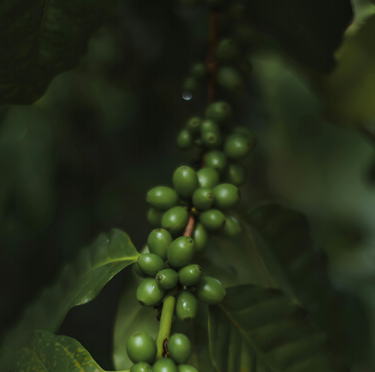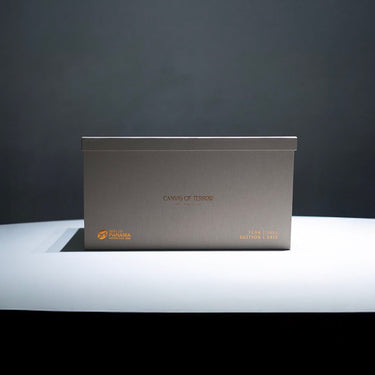For coffee enthusiasts in the UK, choosing the right coffee maker for your countertop is key to an enjoyable brewing experience. Two popular manual coffee makers are the French press cafetiere and the AeroPress . Both produce smooth, full flavoured coffee, but they have some key differences.
We compare cafetieres and AeroPress coffee makers so you can decide which is best suited for your coffee routine.
What is a Cafetiere?
Also known as a French press or coffee plunger, the cafetiere is a classic coffee maker that has stood the test of time. It consists of a cylindrical glass or stainless steel beaker, a plunger with a metal filter, and a lid.
How Do You Use a Cafetiere?
Using a cafetière is very straightforward:
-
Prepare Your Equipment: Gather your cafetière, a kettle, coarse ground coffee (about 55-60 grams per litre of water), and a timer. A scale is optional but useful for precision.
-
Boil Water: Heat your water in a kettle. Ideally, the water temperature should be around 90°C to 95°C (195°F to 205°F).
-
Preheat the Cafetière: Pour some hot water into the empty cafetière to warm it up. Swirl the water around, and then discard it.
-
Add Coffee Grounds: Place the coarse coffee grounds into the cafetière. The coarseness of the grind should resemble that of sea salt.
-
Pour Water: Pour the hot water over the coffee grounds. Make sure to saturate all the grounds evenly.
-
Stir Gently: After adding water, allow to steep for 4 minutes, then give the mixture a gentle stir with a wooden or plastic spoon to ensure all the grounds are wet and to break up the crust that forms on top.
-
Steep the Coffee: Place the lid on the cafetière with the plunger pulled all the way up. Let the coffee steep for another 5 minutes. This time can be adjusted to taste; longer steeping will result in a stronger brew.
-
Plunge Slowly: After steeping, slowly and steadily press the plunger down. This separates the coffee grounds from the brewed coffee.
-
Serve Immediately: Pour the coffee into your cup as soon as you’ve plunged. Letting it sit in the cafetière can lead to over-extraction, making the coffee taste bitter.
-
Enjoy: Enjoy your freshly brewed coffee.
This is known as the immersion brewing method, and it results in a robust cup with layered flavours.
What is an AeroPress?
The AeroPress coffee maker is a more recent invention that was introduced in 2005. This portable coffee brewer consists of a plastic cylindrical brewing chamber, plunger, and filter cap. Like a cafetière, the AeroPress uses manual pressure to extract the coffee, creating a strong, rich brew. It doesn't require electricity or complex machinery, making it a convenient option for making delicious coffee.
How Do You Use an AeroPress?
The AeroPress brews coffee using a mix of immersion and pressure, resulting in a smooth, balanced cup:
-
Assemble Your Equipment: Gather your AeroPress, a grinder, fresh coffee beans, a kettle for hot water, a scale (optional for precise measurement), and a timer.
-
Preheat and Prepare: Boil water in your kettle. While waiting, preheat your AeroPress by rinsing it with hot water. This helps maintain the temperature during brewing.
-
Grind Coffee Beans: Grind about 17-18 grams of coffee to a medium-fine consistency, similar to table salt.
-
Invert the AeroPress: Assemble the AeroPress by placing the plunger partway into the chamber (about up to the number 4 on the side of the chamber) to create a seal, then stand it on the plunger end.
-
Add Coffee: Put the ground coffee into the AeroPress chamber.
-
Add Water: Once the boiled water has cooled for 30 seconds, start pouring it over the coffee grounds, filling the chamber.
-
Stir and Steep: Gently stir the mixture for about 10 seconds. Then, let the coffee steep in the chamber for about 1 minute.
-
Attach Filter Cap: While the coffee is steeping, prepare the filter cap. Place a paper filter in the cap and rinse it with hot water. Screw the cap onto the top of the AeroPress chamber.
-
Flip and Press: After the steeping time, carefully flip the AeroPress onto your cup or carafe. Press down slowly with steady pressure. The pressing should take about 20 to 30 seconds.
-
Enjoy Your Coffee: Once all the coffee is extracted, remove the AeroPress and enjoy your cup. The inverted method produces a rich and flavorful coffee. It’s that easy!
Now, let’s plunge into the key differences between a cafetiere vs AeroPress.
Flavour Profile
The cafetière’s full immersion brewing method extracts maximum flavour oils from the coffee grounds, resulting in an intensely rich-tasting cup. But if it is over extracted, your coffee can become bitter.
In comparison, the AeroPress's shorter brewing time and microfilter result in a clean, sweet, and well-balanced cup. The fine filter blocks more oils and grounds, leading to a lighter body that accentuates acidity and fruit flavours.
Brew Time
A cafetière requires a few minutes of steeping followed by gradual plunging - taking about 5 minutes total. Factoring in grinding beans, boiling water, and cleaning everything afterwards makes it less suitable for busy mornings.
However, the AeroPress coffee maker can produce a cup of coffee in about 1-2 minutes. Stirring takes 10-15 seconds, while pressurised extraction takes about 30 seconds, producing a flavorful, aromatic coffee quickly. The short overall brewing process and easy cleanup make it ideal for busy schedules.
Coffee Consumption
You should consider your average brewing and serving needs when choosing between a cafetiere or an AeroPress.
Most cafetieres have a minimum capacity of 3 cups or 600ml, with some models going up to 12 cups. This greater volume allows you to brew enough coffee for entertaining or serving groups at one time.
In contrast, the AeroPress makes one standard cup or shot of coffee concentrate per pressing, making it better suited for solo coffee drinkers. If you want larger batches, you have to repeat the process or opt for the AeroPress Coffee Maker XL .
Design
Good news! Neither coffee maker requires electricity nor compostable coffee pods . Simply disassemble and clean with soap and water. The cafetière’s glass and stainless steel are simple to hand wash, but pay attention to the metal filter as fine grounds can get lodged there.
The AeroPress’s plastic and silicone materials make it quick to clean. Plus, its filter cap and paper tend to capture most of the grounds, making maintenance easy. Make sure to avoid abrasive scourers, as this can scratch the brew chamber.
Quality and Durability
A quality cafetière should be made of thick, tempered glass or stainless steel for thermal retention. With care, this hardy construction can last over a decade of daily use. Cheaper presses may crack or shatter if you drop them.
The AeroPress’s plastic parts are BPA-free and designed to withstand falls. Filters and seals may have to be replaced, if you use your AeroPress frequently.
Price
You can find budget cafetières for under £10, but better home models range from £25-50 depending on size and material. Additional costs may include buying a coffee grinder and maintaining a supply of filters.
On the other hand, a standard AeroPress costs around £30, with multiple filter papers and accessories included to make various coffee styles. Upgrades might include additional packs of filters and a fine burr grinder.
Overall, while basic French press coffee makers have lower initial costs, the AeroPress offers great value at around £30. The all-in-one set can produce amazing coffee that rivals expensive gear yet remains affordable for any budget.
Raving About Our Coffee Makers
Both the cafetiere and AeroPress have earned their place in the hearts of coffee enthusiasts. By understanding their key contrasts around factors like brew time, design, and price, you can best decide which manual coffee maker suits you.
Here at Rave Coffee, our AeroPress range includes AeroPress coffee makers, accessories, and gift sets. We also stock the reusable stainless steel AeroPress filter so you can easily switch to a waste-free brewing system. We also offer a cafetiere range if you prefer the traditional French press method.
Whichever device you choose, use it with care and quality fresh coffee for the best results. Combining outstanding beans with a brewer that unlocks subtle flavours and aromas lets you experience the craft to its fullest.







Please add me to email list
Andrea on